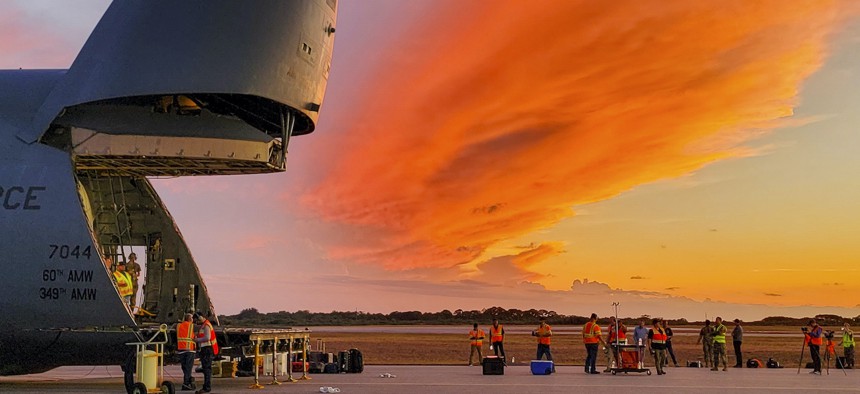MARCUS WEISGERBER

The U.S. Space Force will buy cheaper, smaller satellites in the future instead of the bespoke, multi-billion dollar behemoths it has relied on for decades, according to the service’s acquisition chief.
The long-anticipated move to smaller satellites is now official policy, according to an Oct. 31 letter from Frank Calvelli, the Space Force’s assistant secretary for acquisition and integration.
Calvelli’s letter also urges the service’s acquisition officials to move quickly and buy satellites via fixed-price contracts, which puts the onus on companies to deliver innovative products on time and budget.
“To gain speed, we must shorten development timelines by building smaller satellites, acquiring ground and software intensive systems in smaller more manageable pieces that can be delivered faster, using existing technology and designs to reduce non-recurring engineering to enable speed, taking advantage of commercial systems and capabilities, and most importantly delivering programs on cost and schedule through solid program management discipline and execution,” Calvelli wrote in the Oct. 31 letter, which was reviewed by Defense One.
Calvelli issued the new policy just weeks after the satellite-buying Space Development Agency was formally transferred to the Space Force from the Office of the Secretary of Defense.
The assistant secretary told his service’s acquisition professionals not to tolerate poor contractor performance and to “hold industry accountable” for cost and schedule targets.
“With the urgent need to provide new space capabilities faster and for architecture resiliency, do not tolerate bad performance that we have seen in some traditional large satellite and large ground cost-plus contracts,” he wrote.
Calvelli’s letter also urges satellite buyers not to over-classify systems, because it “can limit our ability to integrate with other domains and can hinder getting ideas from a broader pool of industry.” He also said officials should use classifications that allow foreign allies and partners access to new satellites.
The letter puts into formal policy new buying practices already being used in various weapon-purchasing offices. In recent years, military officials have started buying smaller satellites to augment larger ones that provide navigation, intelligence, and data transmissions.
Large satellites often take more than a decade to build, meaning their technology is dated by the time they reach orbit. The larger satellites also have become increasingly vulnerable to Chinese and Russian anti-satellite weapons. A top Russian official last week threatened to shoot down commercial satellites used to help Ukraine’s military. U.S. firms Maxar and Planet Labs have provided satellite imagery used to monitor Russian troop movement and perform damage assessment, while SpaceX Starlink satellites have provided internet access to Ukrainian forces.
“The traditional ways of doing space acquisition must be reformed in order to add speed to
our acquisitions to meet our priorities,” Calvelli wrote. “Former approaches of developing a small amount of large satellites along with large monolithic ground systems that took many years to develop on cost-plus contracts can no longer be the norm.”
Building smaller satellites will shorten the time to develop the new spacecraft from “from many years to just a couple,” Calvelli wrote.
Moving to this type of “schedule-driven acquisition” for satellites, in which new versions are purchased every two years, could allow the Pentagon to get better products from the core industrial base, said Josh Harman, a former deputy assistant secretary of defense and intelligence who is now president of Geost, a company that specializes in technology that defends satellites.
The Space Development Agency is using two-year development cycles in its effort to build a new constellation of data satellites. The agency plans to update the satellites every two years.
“If you're driving to schedule-driven acquisition, typically on two-year centers, you're really allowing the best of technology to come to the forefront,” he said. “Because the industry can see that that's the cycle, they start revamping their investment structure around that, which means they're designing to produce new capabilities every two years, rather than trying to hit a grand slam every eight to 10 years” on larger satellite programs.
In recent years, companies have been reorganizing their businesses to build smaller satellites at a quicker clip. Lockheed Martin, for instance, built a $350 million satellite factory in Colorado.
No comments:
Post a Comment